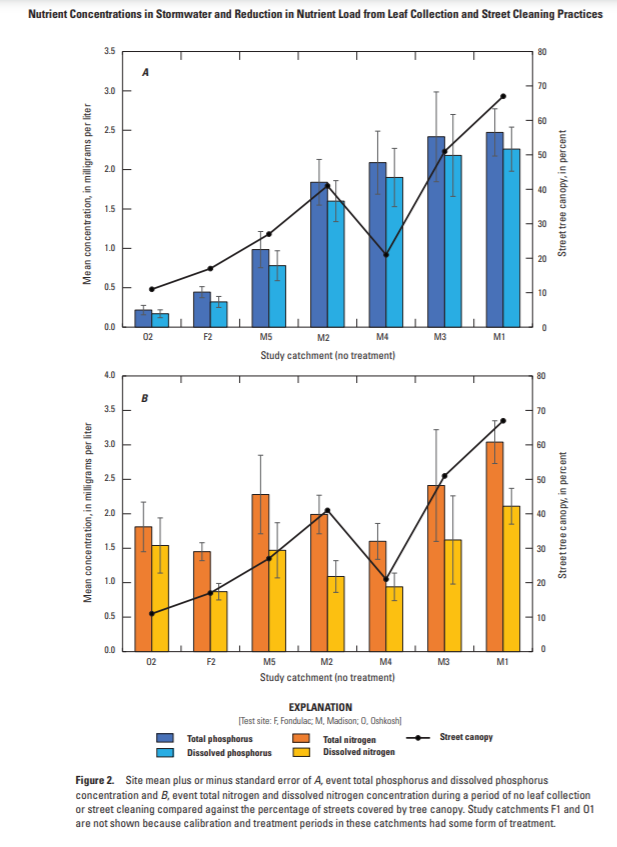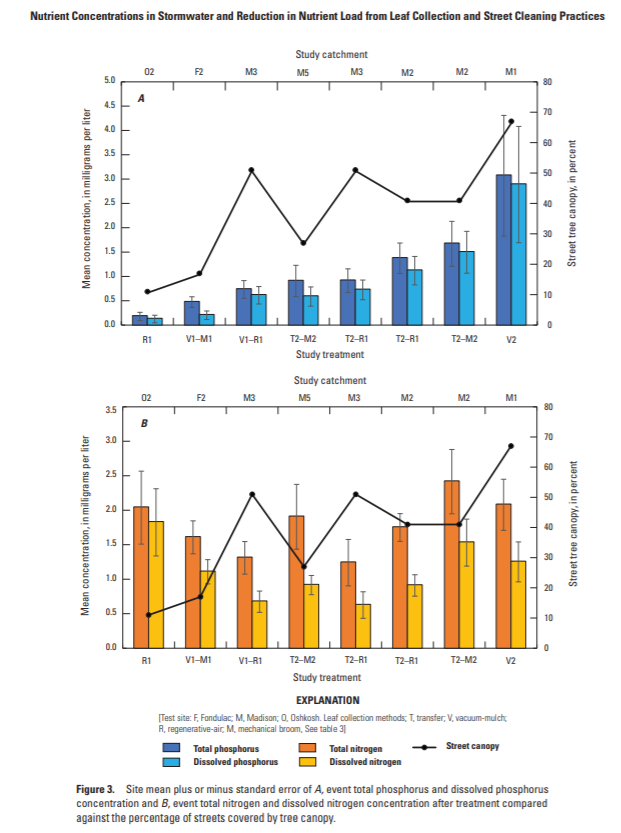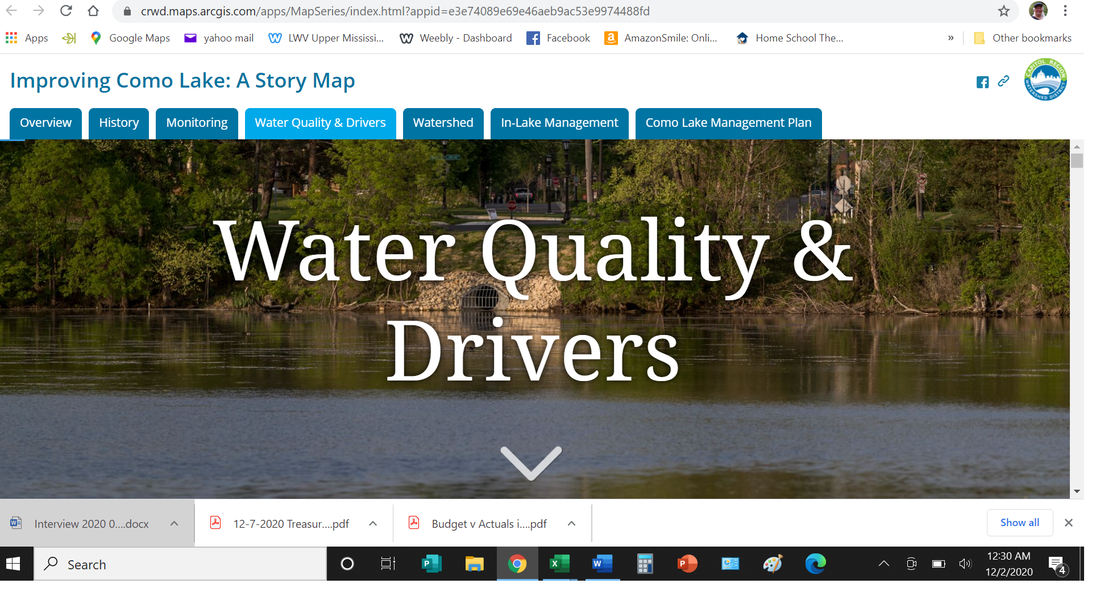|
As a reader of this Blog, you'll know that we talk a lot about nutrient reduction. In our November posts and newsletter, we focused on nutrient pollution from agricultural runoff. Why do we care about nutrients: Read more in this previous post about the Dead Zone, compliments of the Mississippi River Network. Here in December, we'll focus on urban stormwater. In today's post, we're sharing a recent study conducted by the US Geological Survey in three urban areas in Wisconsin. The study is can be found at Reducing Leaf Litter Contributions of Nitrogen and Phosphorus and Nitrogen in Urban Stormwater through Municipal Leaf Collection and Street Cleaning Practices. on the USGS website. Here, they compared the amount of nitrogen and phosphorus in runoff in areas where heavy tree canopies overhang city streets. The test was whether street sweeping - the mechanical removal of leaves from the street in various ways - reduced the amount of nutrients in the runoff. The study tested both types of leaf removal and frequency.
Why does this matter? It's critical that cities know what is effective for reducing nutrient pollution to be able to protect their local water resources. The impact of leaves from city streets can change a small lake. This story map from Capitol Region Watershed describes the changes to Como Lake in St. Paul, Minnesota, due to leaves from the heavily treed streets upstream from the lake. They said, "Phosphorus is the primary pollutant of concern in Como Lake. It occurs naturally in lakes in low concentrations and is required to support aquatic life. However, in high concentrations, phosphorus causes the overgrowth of algae and aquatic plants, and reduces water quality. "
Here the watershed has engaged citizens in the neighborhood and the City of St. Paul in leaf collection, and it's helping the lake, a gem of St. Paul and the central feature in Como Park.
0 Comments
Leave a Reply. |
| LWV Upper Mississippi River Region | UMRR blog |



 RSS Feed
RSS Feed